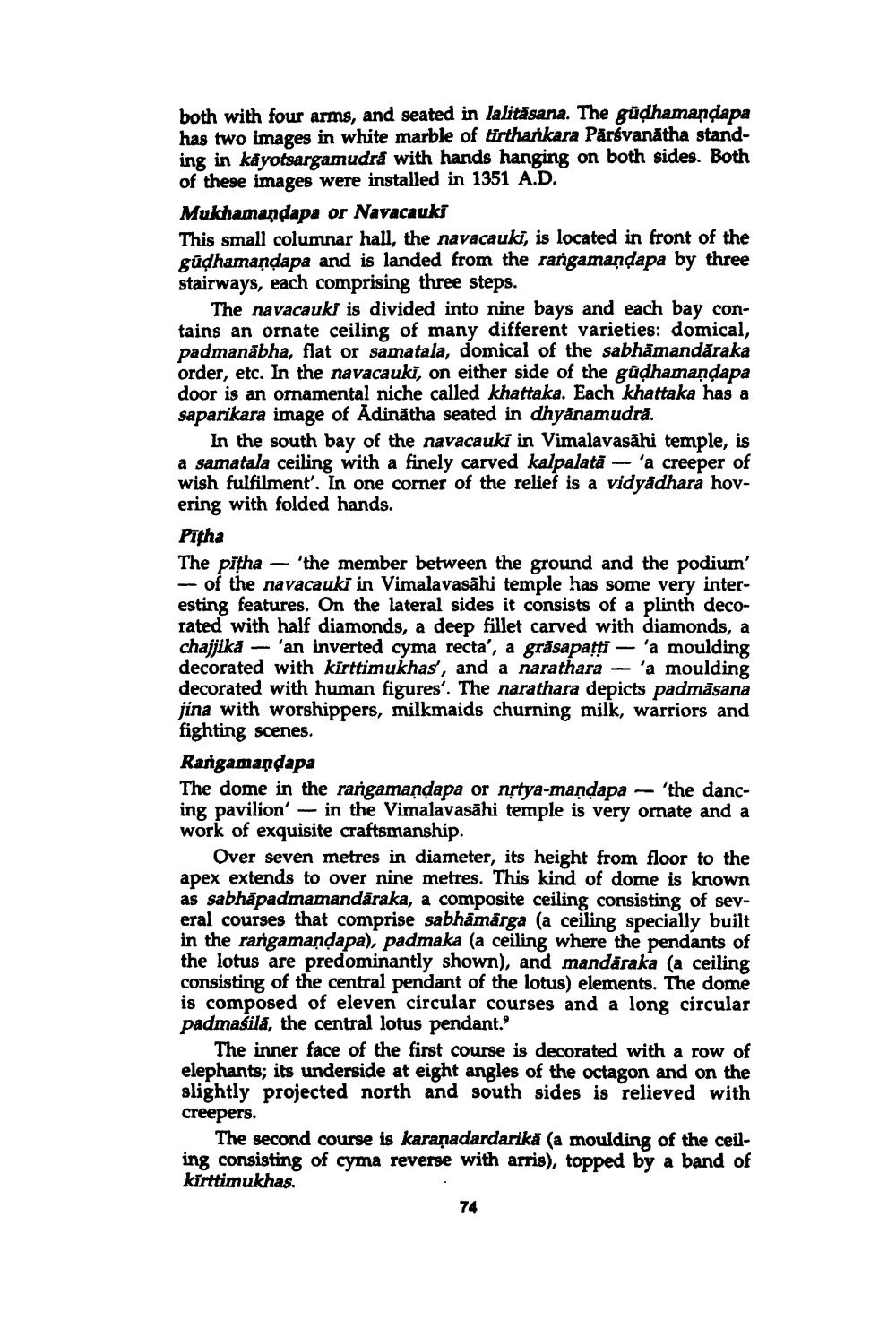________________
both with four arms, and seated in lalitäsana. The güdhamandapa has two images in white marble of tirthankara Parsvanatha standing in kayotsargamudra with hands hanging on both sides. Both of these images were installed in 1351 A.D.
Mukhamandapa or Navacauki
This small columnar hall, the navacauki, is located in front of the güḍhamandapa and is landed from the rangamandapa by three stairways, each comprising three steps.
The navacauki is divided into nine bays and each bay contains an ornate ceiling of many different varieties: domical, padmanabha, flat or samatala, domical of the sabhämandāraka order, etc. In the navacauki, on either side of the guḍhamandapa door is an ornamental niche called khattaka. Each khattaka has a saparikara image of Adinatha seated in dhyanamudrā.
In the south bay of the navacauki in Vimalavasahi temple, is a samatala ceiling with a finely carved kalpalata - 'a creeper of wish fulfilment'. In one corner of the relief is a vidyadhara hovering with folded hands.
Pitha
The pitha 'the member between the ground and the podium' - of the navacauki in Vimalavasahi temple has some very interesting features. On the lateral sides it consists of a plinth decorated with half diamonds, a deep fillet carved with diamonds, a chajjikä -'an inverted cyma recta', a grasapaṭṭi -'a moulding decorated with kirttimukhas', and a narathara'a moulding decorated with human figures'. The narathara depicts padmasana jina with worshippers, milkmaids churning milk, warriors and fighting scenes.
1
Rangamandapa
- 'the danc
The dome in the rangamanḍapa or nṛtya-mandapa ing pavilion' - in the Vimalavasahi temple is very ornate and a work of exquisite craftsmanship.
Over seven metres in diameter, its height from floor to the apex extends to over nine metres. This kind of dome is known as sabhāpadmamandāraka, a composite ceiling consisting of several courses that comprise sabhämärga (a ceiling specially built in the rangamandapa), padmaka (a ceiling where the pendants of the lotus are predominantly shown), and mandaraka (a ceiling consisting of the central pendant of the lotus) elements. The dome is composed of eleven circular courses and a long circular padmašila, the central lotus pendant."
The inner face of the first course is decorated with a row of elephants; its underside at eight angles of the octagon and on the slightly projected north and south sides is relieved with
creepers.
The second course is karaṇadardarikä (a moulding of the ceiling consisting of cyma reverse with arris), topped by a band of kirttimukhas.
74




